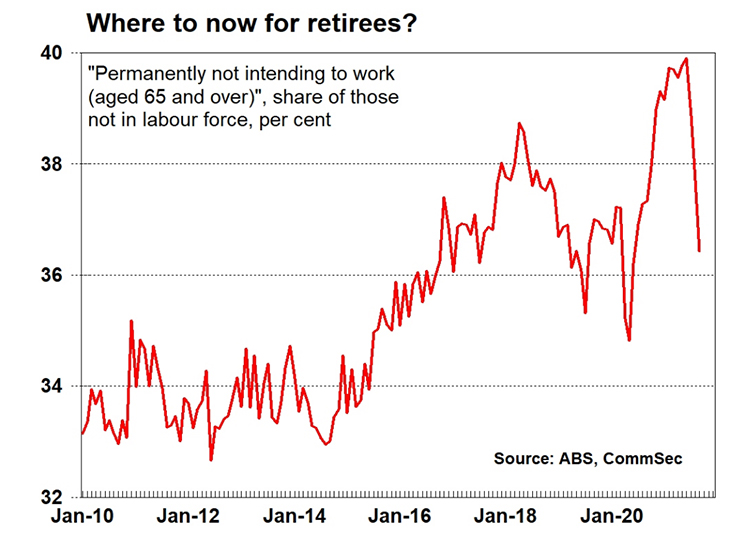As Australia’s vaccination rate heads towards meeting important targets, economists are no clearer on how the shockwaves caused by the COVID-19 pandemic will play out in the months to come.
There are fears that as business slowly starts to pick up around the country, growth will be slowed by a significant labour shortage, with many older workers, who may have lost work, choosing not to return to the workforce.
A CommSec Economic Insight analysing detailed labour force data has found that lockdowns in NSW and Victoria have scrambled the figures, but appear to point to many older Australians not returning to the workforce.
Read: ANZ CEO calls for business to hire more older workers
The report explains that prior to the pandemic, one of the major reasons that Aussies were not employed or looking for jobs was that they had retired and were out of the job market.
In April 2018, a record 38.7 per cent of people aged 65 and over said that they were ‘permanently not intending to work’, which was a significant increase from the 33 per cent that answered that way in September 2014.

Prior to COVID-19, the figures showed a reassessment, with the proportion of those not in the workforce because they were retired falling from 38.7 per cent to a three-year low of 35.3 per cent in July 2019.
Read: Attitudes towards older Aussies at work a ‘national crisis’
The effect of COVID hitting shortly after this change has made it impossible to determine if this was the start of a trend, the CommSec economists explain.
That is because more people left the job market over lockdown periods because they were not employed but were not looking for work because they were likely to return to their employer when businesses reopened.
That meant that the proportion of those not in the workforce because they were retired hit a record 39.9 per cent of the total in June 2021 and this has since fallen to a low of 36.4 per cent in September 2021.

Read: Older workers can offset economic impacts of population ageing
CommSec’s chief economist, Craig James, explains that working out why people are not in the job market will be important in the coming months.
“If more people are electing to retire, then there are fewer potential workers to fill positions,” Mr James said. “That may mean the job market tightens more than generally expected, putting upward pressure on wages and prices. And that is especially the case if foreign borders stay closed.
“Older Aussies may see greater health risks in being in the job market in the COVID era. And still others may elect to live large given the experience of the past 18 months.
“At this stage data still shows that older Aussies are active in the job market with record participation levels. However, peak levels may not be far away.”
Earlier this year, ANZ chief executive Shayne Elliott said that employers should turn to older Australians to address labour shortages.
Mr Elliott explained that ANZ had found older workers more effective in customer service roles and better able to empathise with customers in difficulty due to more life experience than younger workers.
In November last year, a research discussion paper commissioned by Sustainable Population Australia (SPA) said that the proportion of workers over 65 would settle at around 28 to 33 per cent and that over-65s would never outnumber younger adults.
Did you lose work as a result of the pandemic? Do you plan on returning to the workforce or did you use the opportunity to take an early retirement? Why not share your thoughts in the comments section below?
If you enjoy our content, don’t keep it to yourself. Share our free eNews with your friends and encourage them to sign up.

